(This post was made possible with research by Thomas Allen.)
I wrote on July 3 about how North Carolina’s electorate has changed since the 2020 election. There were three main takeaways:
-
-
Democrat registrations have declined a lot (a net loss of 219,230 registrations from November 3, 2020, to June 23, 2024),
-
Republican registrations have increased slightly (a net gain of 28,397 registrations), and
-
Unaffiliated registrations have increased a lot (a net gain of 361,098 registrations).
-
Those changes come from several sources, including people registering to vote for the first time, moving into the state or a new county, being removed after dying or moving away, or changing party affiliation. That raised questions on social media and elsewhere about the role of party switchers in the transformation of North Carolina’s electorate since the 2020 election.
With apologies to North Carolina’s smaller parties, this post will focus on switching between these largest registrations: Democrats, Republicans, and unaffiliated. Data was taken from the North Carolina State Board of Elections’ party change files.
Democrats Suffer from Party Switching, Unaffiliated Gains
Since the 2020 election, there has been a great deal of movement between the two major parties and the unaffiliated registration. From November 2020 through June 2024, 47,732 voters switched from Democratic to Republican, while 16,022 went the other way. Movement between the Democratic Party and the unaffiliated was even greater, with 120,665 Democrats becoming unaffiliated and 64,596 unaffiliated voters becoming Democrats. The movement between Republican and unaffiliated registrations was also large but more balanced, with 101,518 Republicans becoming unaffiliated and 72,236 unaffiliated voters moving into the Republican column.
Taken together, the net changes show a marked decline of 87,779 registrations for Democrats due to major party switching, while party switchers increased the number of unaffiliated voters in North Carolina by 85,351. Republicans held steady with a net gain of 2,428 registrations due to party switching (see Figure 1).
Figure 1:

Data Source: North Carolina State Board of Elections
Registration Changes Were not Even Across Time
Figure 2 shows party registration switches by month from November 2020 through June 2024. Most months show about what you would expect given the party change totals, with Democrats on the losing end of party switching, unaffiliated rising each month, and Republicans more-or-less holding steady.
There are some notable “blips” in that chart, however.
Figure 2:

Data Source: North Carolina State Board of Elections
The first blip followed the January 6, 2021, riot at the United States Capitol. Due to people leaving the party, Republicans suffered a net loss of over 11,000 registrations in January and February of that year, with an additional decline over the next several months. The Democrats still had a net loss of 281 registrations during that period, but the Democratic decline was much less than the four-digit drop they usually suffer from party-switchers. As seen in Figure 2, unaffiliated registrations saw the biggest gains during that period (as they did in almost every month covered by this report).
The next period of relative instability brought on by party switching was during the 2022 primary and general elections. Some of that was due to Democrats switching to Republicans or becoming unaffiliated to vote in the Republican primary, especially for the 11th Congressional District primary between incumbent Madison Cawthorn and several challengers (where an estimated 2,000 Democrats switched to vote against Cawthorn).
There was a drop in Democratic registrations ahead of the March 2024 primary. That was followed by a roughly two-month period between the primary and a statewide second primary for two races, during which county election boards were not supposed to file party switches (although some did). The large decline in the number of Democratic registrations in May and June of this year is partially due to the filing of party switches from the prior two months and partially due to an organic movement away from Democrats.
The bottom line is that party-switching data reinforces the message from net registration change data: Democrats are down, Republicans are up a little, and unaffiliated registrations are up a lot. However, those changes are not consistent and reflect political events over the past four years.
